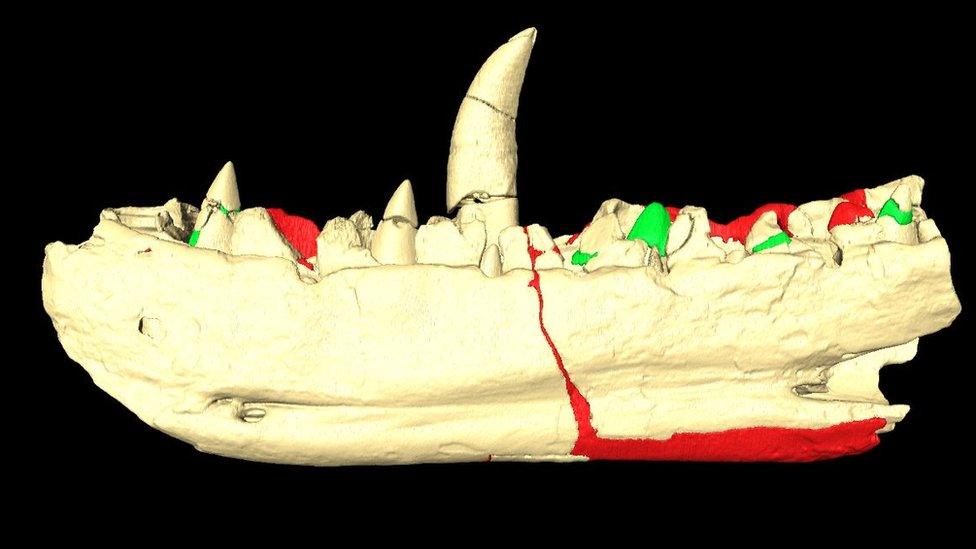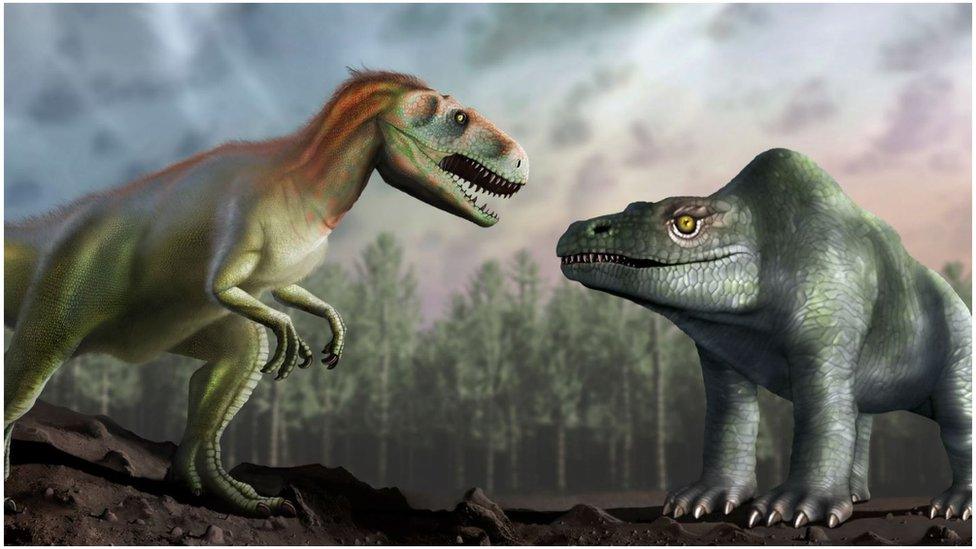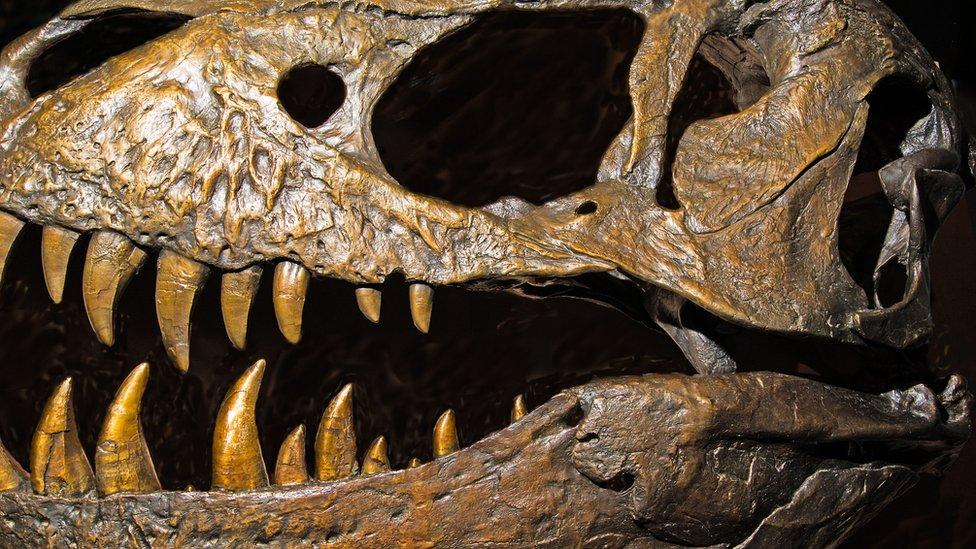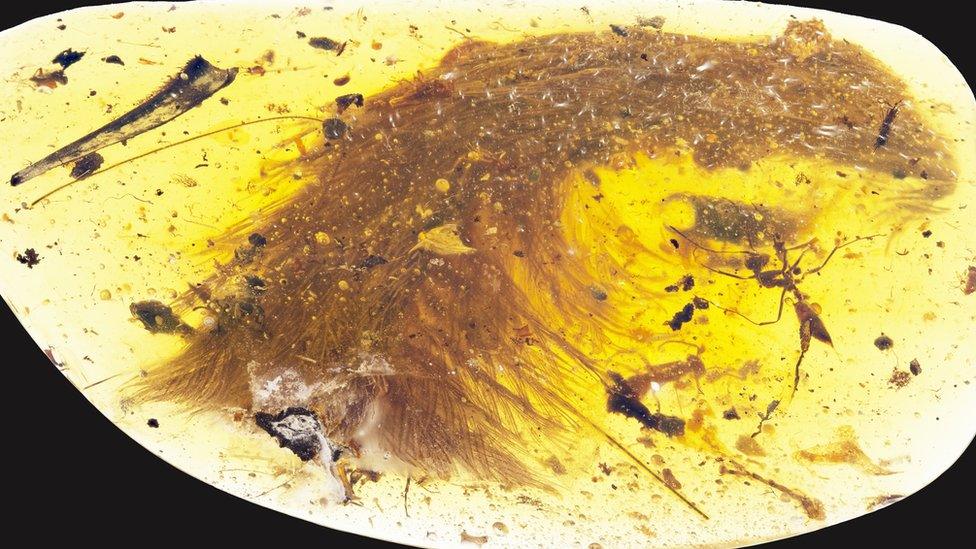Scanning technology reveals 'lost' Megalosaurus teeth
- Published

The scans revealed teeth the scientists did not know the dinosaur had
Scientists researching one of the world's first dinosaur finds have discovered the existence of five teeth they did not realise it had.
The Megalosaurus was found in Stonesfield, Oxfordshire, and was the first dinosaur to be named in 1824.
Researchers at the University of Warwick have created a 3D scan of the dinosaur and found previously unseen teeth.
They said the research would help with future restoration on the specimen.
'A fantastic opportunity'
Professor Mark Williams, from the university, said he had conducted the research using scanning technology from aerospace and automotive engineering.
He took more than 3,000 X-ray images of the dinosaur's jawbone, creating a digital three-dimensional image of the fossil.
He said the image had allowed him to see inside the creature's jawbone for the first time and he was able to trace the roots of teeth and the extent of different repairs.


An artist's impression of how Victorian palaeontologists thought the Megalosaurus looked (right) and how modern scientists understand it to have looked (left)
The Oxfordshire Megalosaurus was not the first dinosaur to be found, but it was the first to be described and scientifically named
It was a nine-metre long carnivore that stood on its hind legs and probably weighed about a tonne
It was named in 1824 by William Buckland, a fossil hunter and clergyman
A complete skeleton of the dinosaur has never been found

"The scans have revealed previously unseen teeth that were growing deep within the jaw before the animal died - including the remains of old, worn teeth and also tiny newly-growing teeth," he said.
"Being able to use state-of-the-art technology to scan such a rare and iconic natural history specimen was a fantastic opportunity."
He added the scans would help the Oxford University Museum of Natural History, which owns the specimen, make important decisions about any future restoration work.
- Published22 March 2017

- Published8 December 2016
